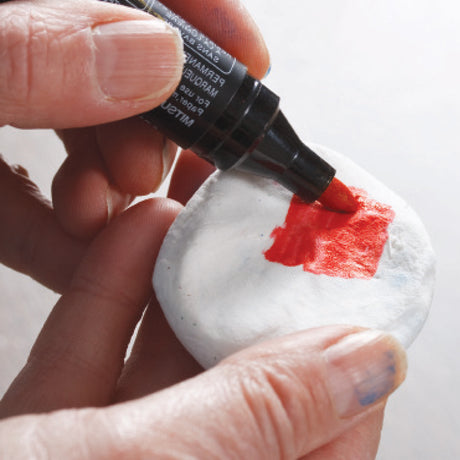- 240g pack with six 40g canisters
- Colour: White
- Lightweight, soft, and elastic for easy modelling
- Can be pulled, stretched, rolled, and embossed into any shape
- Bonds wet to dry – no adhesives or tools required
- Can be coloured, painted, and decorated once dry
- Handy canister packaging for easy classroom distribution
- Air-dries in hours – no kiln or oven needed
- Shelf life of 12 months
- Suitable for ages 3+
In the art room, Paper Magiclay is ideal for sculpting, model-making, and mixed-media projects. Its soft, stretchable texture makes it easy to pull, roll, emboss, and shape, allowing students to create detailed figurines, textured reliefs, and lightweight 3D structures. Teachers can incorporate it into STEAM activities, fine motor skill development, and creative storytelling projects. With its quick air-drying properties and adaptability, this clay is an essential resource for all ages and skill levels.
Important features of Magiclay:
• Magiclay adheres wet to wet, and wet to dry – no adhesives are required. Magiclay can also stick onto paper and canvas to create 3D and textured elements to artwork. Best used applied over an armature, so that only a very thin layer of the material is required.
• Magiclay comes in a range of colours and mixes using the same colour mixing rules as paint.
• A great material to use after exploring real clay or Clay Dough, to develop skills and create final artwork.
• Magiclay only has half an hour workability before it will start to harden.
• Work on a clean surface and avoid overworking before attaching material to a model.
• Store unused material in a sealed container to prevent premature drying.
Tips when using Magiclay:
• Colouring (Wet): Easily colour white Magiclay with paint, dye and markers. Just add a small amount of pigment and mix through prior to modelling. For marbled effects, lightly mix colours.
• Colouring (Dry): Once Magiclay is dry, its surface can be painted or printed on.
• Model Making: Paper Magiclay will bond wet to dry – just press on a surface, or press parts together and it will hold; no adhesives, joining techniques or special tools are required. This is why it is ideal clay for model making and popular with all age levels.
• Building Up Surface: Press Magiclay directly onto canvas or paper to build up a surface on which to paint. Emboss and imprint designs and patterns into the surface. When dry, Magiclay can be stitched into.
• Shaping and Finishing a Form: Magiclay can be applied to an object to create a unique form. Once sealed, alternate between sanding and painting to build up a polished and smooth surface. Varnish to finish.
FAQ:
Q: How many golf balls are there in a pack of 200g Magiclay?
A: You can make 20 golf balls in a packet of 200g Magiclay – White.
Q: How many Mask Moulds Female/Male can you make from a pack of 200g Magiclay – White?
A: FA115-FE Approximately 4 Female Masks*, and FA115-MA Approximately 3 Male Masks* (* this all depends on the thickness of the masks)
Q: How many 100mm poly balls can be covered by 1 pack of 200g magiclay?
A: Approx 10-15 if you do a thin layer.
Q: How many meters will Magiclay roll out to?
A: Approx ¾’s of a meter (not a square metre)
























